Recombinant Human ECE2 protein(Gly199-Trp883), hFc-tagged
| Cat.No. : | ECE2-690H |
| Product Overview : | Recombinant Human endothelin converting enzyme 2 isoform A (NP_055508.3) (Gly 199-Trp 883) was expressed in HEK293, fused with the Fc region of Human IgG1 at the N-terminus. |
| Availability | April 02, 2025 |
| Unit | |
| Price | |
| Qty |
- Specification
- Gene Information
- Related Products
- Case Study
- Application
- Download
| Species : | Human |
| Source : | HEK293 |
| Tag : | Fc |
| Protein Length : | 199-883 a.a. |
| Form : | Lyophilized from sterile 100mM Glycine, 10mM NaCl, 50mM Tris, pH 7.5. Normally 5 % - 8 % trehalose, mannitol and 0.01% Tween80 are added as protectants before lyophilization. |
| Molecular Mass : | The recombinant human Fc/ECE2 is a disulfide-linked homodimeric protein. The reduced monomer consists of 921 amino acids and predicts a molecular mass of 105 kDa. As a result of glycosylation, the apparent molecular mass of rh ECE2/Fc monomer is approximately 120-130 kDa in SDS-PAGE under reducing conditions. |
| Endotoxin : | < 1.0 EU per μg of the protein as determined by the LAL method |
| Purity : | > 95 % as determined by SDS-PAGE |
| Storage : | Samples are stable for up to twelve months from date of receipt at -20°C to -80°C. Store it under sterile conditions at -20°C to -80°C. It is recommended that the protein be aliquoted for optimal storage. Avoid repeated freeze-thaw cycles. |
| Reconstitution : | It is recommended that sterile water be added to the vial to prepare a stock solution of 0.2 ug/ul. Centrifuge the vial at 4°C before opening to recover the entire contents. |
| Gene Name | ECE2 endothelin converting enzyme 2 [ Homo sapiens ] |
| Official Symbol | ECE2 |
| Synonyms | ECE2; endothelin converting enzyme 2; endothelin-converting enzyme 2; KIAA0604; MGC2408; ECE-2; MGC17664; MGC78487; |
| Gene ID | 9718 |
| mRNA Refseq | NM_001037324 |
| Protein Refseq | NP_001032401 |
| MIM | 610145 |
| UniProt ID | O60344 |
| ◆ Recombinant Proteins | ||
| ECE2-12265H | Recombinant Human ECE2, His-tagged | +Inquiry |
| ECE2-4351H | Recombinant Human ECE2 Protein, His (Fc)-Avi-tagged | +Inquiry |
| ECE2-3813H | Recombinant Human ECE2, His tagged | +Inquiry |
| ECE2-4152HF | Recombinant Full Length Human ECE2 Protein, GST-tagged | +Inquiry |
| ECE2-690H | Recombinant Human ECE2 protein(Gly199-Trp883), hFc-tagged | +Inquiry |
| ◆ Cell & Tissue Lysates | ||
| ECE2-2976HCL | Recombinant Human ECE2 cell lysate | +Inquiry |
| ECE2-2052HCL | Recombinant Human ECE2 cell lysate | +Inquiry |
Case 1: Smith-Anttila CJA, et al. Autoimmunity. 2017
APS1-linked AIRE mutations reveal ECE-2 as a neuroendocrine-specific autoantigen, detected in 46% of patients’ sera but absent in other autoimmune disorders. Despite high pancreatic/pituitary expression, ECE-2 immunoreactivity lacks correlation with hypopituitarism, highlighting its role in APS1 autoimmunity.
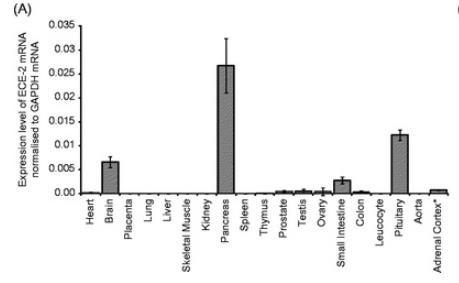
Fig1. Tissue mRNA expression of ECE-2 by quantitative PCR.
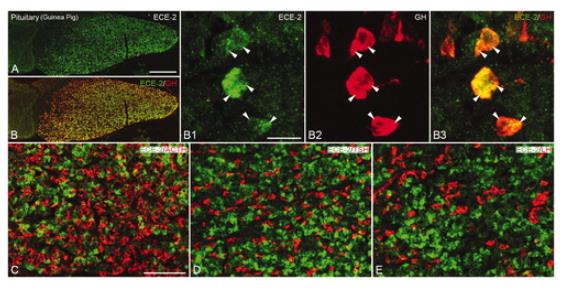
Fig2. Characterization of the ECE-2 cell population in the pituitary gland from guinea pig.
Case 2: Liao X, et al. JCI Insight. 2020
Study identifies rare ECE2 gene mutations (R186C/F751S) in Alzheimer’s disease pathogenesis, linking impaired amyloid-beta degradation to increased AD risk. Research using AD model mice demonstrates wild-type ECE2 overexpression reduces Aβ plaques and cognitive deficits, while mutations abolish this neuroprotective effect. These findings position ECE2 as a key genetic risk factor in neurodegenerative disorders, suggesting pharmacological activation of Aβ-degrading enzymes could advance AD treatment strategies.
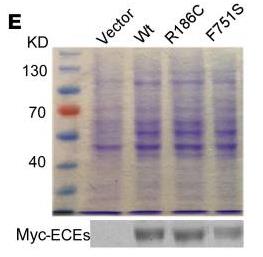
Fig1. Identification of purified proteins by Coomassie staining (upper) and Western blotting.
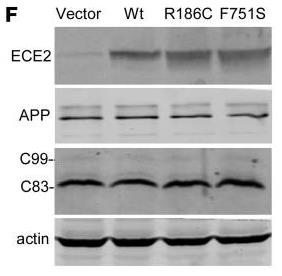
Fig2. 20E2 cells were transfected with vector, ECE2WT, ECE2R186C, or ECE2F751S plasmids, and cell lysates were blotted.
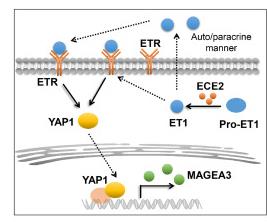
Fig1. Schematic diagram of ECE2/ET1 axis-induced NSCLC progression through YAP1/MAGEA3 signaling. (Huaiqing Xiao, 2025)
Not For Human Consumption!
Inquiry
- Reviews
- Q&As
Ask a Question for All ECE2 Products
Required fields are marked with *
My Review for All ECE2 Products
Required fields are marked with *
Inquiry Basket


